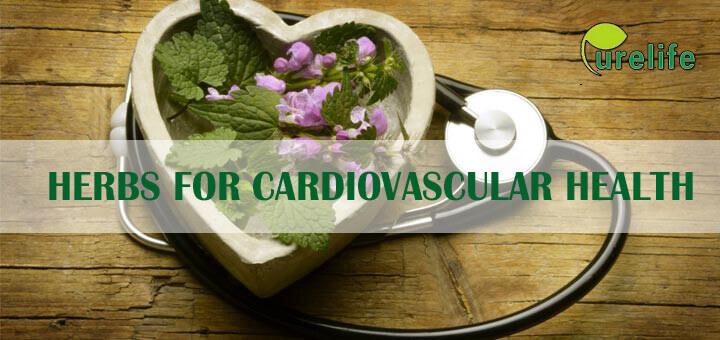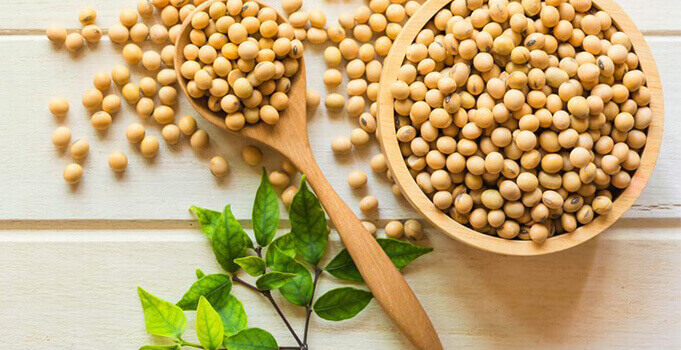The active ingredients in herbs for cardiovascular health

Do you well know about cardiovascular diseases? And do you have interest in learning about the active ingredients in herbs for cardiovascular health? Cardiovascular diseases, the number one killer in the world, has the characteristics of high morbidity, high disability rate, and high mortality rate. It is the main reason of the increase in mortality in all countries. With the arrival of aging and unreasonable living structure, the chronic disease with cardiovascular disease has become a public health problem that threatens the world. Cardiovascular diseases refer to ischemic or hemorrhagic diseases that occur in the heart, brain, and body tissues due to high blood fat, blood viscosity, atherosclerosis, and hypertension. Reports indicate that 17.7 million people worldwide die each year from cardiovascular problems, which is 31% of the total number of deaths. Although cardiovascular diseases have been controlled and prevented to some extent in recent years, the number is still rising and is expected to reach 23.3 million by 2030.
Numerous studies have confirmed that hypertension, abnormal blood lipids, diabetes, obesity, smoking, lack of physical activity and unhealthy eating habits are the main and modifiable risk factors for cardiovascular diseases. But these cause of disease are preventable from the start, killing them in the cradle through interventions. Proper diet and correct lifestyle are the most effective ways of cardiovascular control, and the application of natural functional raw materials and ingredients in daily diet has gradually been recognized by the scientific community and the public. Now, let’s see the active ingredients in herbs for cardiovascular health:
Flavones
Baicalein: It’s extracted from scutellaria , and has the effect of reducing cerebral vascular resistance, improving cerebral blood circulation, increasing cerebral blood flow, and anti-platelet aggregation. Clinical use of cerebral vascular disease after the treatment of paralysis.
Apigenin : Apigenin exists in vegetables and fruits , especially the content in celery is high. It is a natural antioxidant and have the effects of calming, lowering blood pressure and diastolic blood vessels, preventing atherosclerosis, and inhibiting tumors.
Flavonols
Quercetin: Studies have confirmed that quercetin has a significant inhibitory effect on platelet aggregation induced by ADP, thrombin, and platelet activation factor (PAF), and it also has the effect of assisting in the treatment of hypertension and coronary heart disease. Its derivative quercetin oxyacetate lysate has been clinically proven to be used to treat atherosclerosis and hemorrhagic diseases.
Kaempferol : It is a natural antioxidant that has the physiological effect of preventing and delaying oxidative stress response to various diseases such as atherosclerosis, neurodegenerative diseases, diabetes, cancer, and inflammation. In addition, it also has the effects of cough, asthma, and antibacterial, and its application prospects cannot be underestimated.
Flavanone & Flavanol
Hesperidin/ Hesperetin : they are flavanones. A large number of studies have found that Hesperidin/ Hesperetin have a good effect on cardiovascular protection such as antioxidant, anti-inflammatory, anti-myocardial remodeling, blood lipid regulation, anti-atherosclerosis, anti-myocardial ischemia, anti-thrombotic, blood pressure lowering, and anti-arrhythmia. It is a good protective agent for the heart
Catechin : catechin is a flavanol, rich in tea, especially in green tea. It is widely recognized for its anti-oxidation, delaying aging, and preventing oral diseases. In recent years, catechin has also been found to have a wide application value in cardiovascular diseases. Studies have shown that they are conducive to lowering cholesterol and low-density lipoprotein (LDL) in the blood, increasing the concentration of high-density lipoprotein (HDL), also has a certain regulatory effect on vasoconstriction and diastolic, thereby inhibiting elevated blood pressure and maintaining cardiovascular health.
Anthocyanin
Delphinidin : Extracted from Consolida ajacis. Studies have shown that delphinidin can significantly inhibit vascular endothelial cell dysfunction, mainly by increasing endothelial activity, inhibiting apoptosis, reducing lipid peroxidation and inflammatory reactions, increasing cell antioxidant function, and promoting endothelial cell secretion and inhibition. Monocytes and endothelial cell adhesion, So as to inhibit the oxidative stress injury of endothelial cells.
Cyanidin : It is found in plants such as black beans, black rice and purple potatoes. Oxidative stress, inflammatory response, vascular injury and apoptosis of nerve cells can aggravate brain tissue damage caused by ischemic stroke, causing ischemic and hypoxic necrosis of brain tissue. Studies have confirmed that cyanidin can reduce free radical damage, inhibit inflammatory reactions, and protect vascular endothelial cells through various ways to achieve brain protection.
Isoflavone
Soybean isoflavones: also known as phytoestrogens, have the ability to regulate estrogen secretion, postpone menopause in women, and delay aging. In addition, estrogen has also been shown to be associated with heart disease and blood lipids. Soybean isoflavone is natural antioxidants that can increase the antioxidant properties of low-density lipoproteins in serum and inhibit the formation of atherosclerotic plaques in blood vessels, thus preventing atherosclerosis. At the same time, it can help expand vascular elasticity, increase vascular compliance, and keep the arteries of the heart unimpeded.

Genistein : It is mainly from Genista tinctoria Linn, Sophora japonica Linn. It has the function of inducing cell death and inhibiting angiogenesis. It is a potential chronic disease prevention star. A recent study showed that genistein has a certain protective effect on brain damage in mice, perhaps it is related to the antioxidant effect of genistein and the regulation of the PI 3K/Akt pathway.
Carotenoid
Lutein : lutein is one of the natural carotenoids and is recognized as an eye guard star. It is the main pigment and component of the retinal macula, which can relieve visual degradation caused by aging of the body and protect the eyes. Also, because of lutein’s powerful antioxidant properties, it can resist the damage of free radicals to cells and organs in the body, effectively reduce the tendency of arterial wall thickening, and prevent cardiovascular sclerosis and coronary heart disease caused by aging.
Astaxanthin : astaxanthin is a carotenoid found in marine organisms and is known as the fourth generation of natural antioxidants. Natural astaxanthin has anti-inflammatory, anti-oxidation, and enhanced immunity and other effects. In recent years, astaxanthin has become the focus of attention for the role of fighting aging and blood lipid-lowering effects. Scientific clinical experiments have proved that it has reduced low-density lipoprotein and increased high-density lipoprotein levels to prevent arteriosclerosis and ischemic brain damage. In addition, studies have also shown that astaxanthin can reduce the ratio of coronary vessel walls to cavities, reduce the increase of aortic elastins, and thus have the effect of lowering blood pressure.
Polyphenols
Pterostilbene: exists in blue berry. It has a wide range of biological and pharmacological activities at the cell level. It is mainly used to fight atherosclerosis through mechanisms such as anti-inflammatory activity, antioxidant activity, inhibition of platelet aggregation, suppression of foam cell formation, suppression of neovascularization in plaque, regulation of vasoconstriction and relaxation, and inhibition of low-density lipoprotein oxidation modification. However, the effectiveness of human therapy has not yet been established, and scientific researchers need to further dig.
Black garlic polyphenols: it is from fermented black garlic. Because of its antioxidant, anti-inflammatory, anti-cancer, lipid-lowering, atherosclerotic prevention and cardiovascular health benefits, it has become a “constant winner”. It can promote the metabolism of low-density lipoprotein in the liver and adrenal glands, increase the excretion of this substance in the gallbladder, and inhibit the absorption of it by the spleen, thus playing a role in reducing fat and preventing atherosclerosis. Also, studies have shown that taking garlic can help blood circulation and blood stasis, reduce peripheral vascular tension, inhibit cholesterol and fibrinogen levels, and can therefore be used to prevent coronary heart disease, coronary artery spasm, and inhibit the occurrence of atherosclerosis and thrombus formation.
These are the active ingredients in herbs for cardiovascular health, if any interest or question , please contact Purelife bio.


